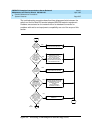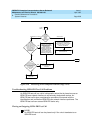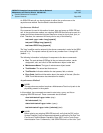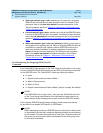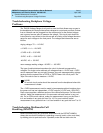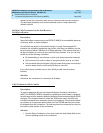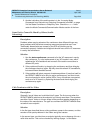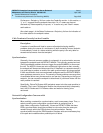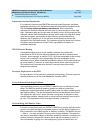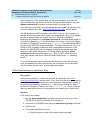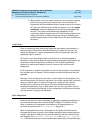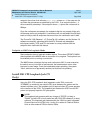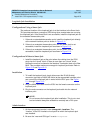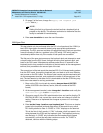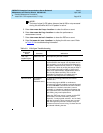
DEFINITY Enterprise Communications Server Release 5
Maintenance and Test for R5vs/si
555-230-123
Issue 1
April 1997
Routine Maintenance Procedures
Page 5-65Troubleshooting Multimedia Call Handling (MMCH)
5
Conference x Endpoint y Vid form under the Capability section. In this section, a
“y” or “c” suggests that the endpoint has video. An “e” means ept has not
declared any video capability in cap set, “n” is audio only, and “blank” means
audio add-on.
Also check page 1 of the Status Conference x Endpoint y Vs form for indication of
the video state for the endpoint values.
Calls Terminate Correctly but Are Unstable
Description
A number of conditions will lead to some or all endpoints having stability
problems during the course of a conference. A lack of stability from an endpoint
is noticeable by a lack of a video switching while the party is the only talker or
excessive disconnects from that endpoint.
Synchronization
Generally, the most common problem is a mismatch in synchronization sources
between the endpoint and the DEFINITY MMCH. This typically causes low-level
(Px64) handshake problems that can trigger the endpoint/MMCH to disconnect
the call. The MCCH’s timers are set to sufficiently high values so that, normally,
the endpoint will timeout and disconnect first. If installed in a customer network, it
is a good idea to perform an audit of the path synchronization is being supplied.
If there are different clock sources between endpoints and the DEFINITY MMCH,
some problems are sure to occur. The severity of these problems can range from
a handshake failure every few seconds to one per day. Depending on the type of
endpoint, this can cause the endpoint to disconnect or just freeze video until the
main problem is resolved.
Specifically, PictureTel System 4000 endpoints seem to be the most sensitive to
instability. The Lucent Technologies Vistium also disconnects fairly infrequently.
Last, the CLI Rembrandt II VP freezes video and waits for framing to be
recovered.
Network Configuration Concerns with
Synchronization
When auditing a network for synchronization, avoid unnecessary hops. Thus, a
switch providing star-configuration synchronization is preferred over a
daisy-chain configuration. Additionally, if there are DEFINITY PBXs that have
EPNs, synchronization should be provided to sub nodes from the same port
network through which the PBX receives its synchronization. Passing
synchronization through the PBX Expansion Interface adds an unnecessary hop
to the path and creates another potential point of failure.



